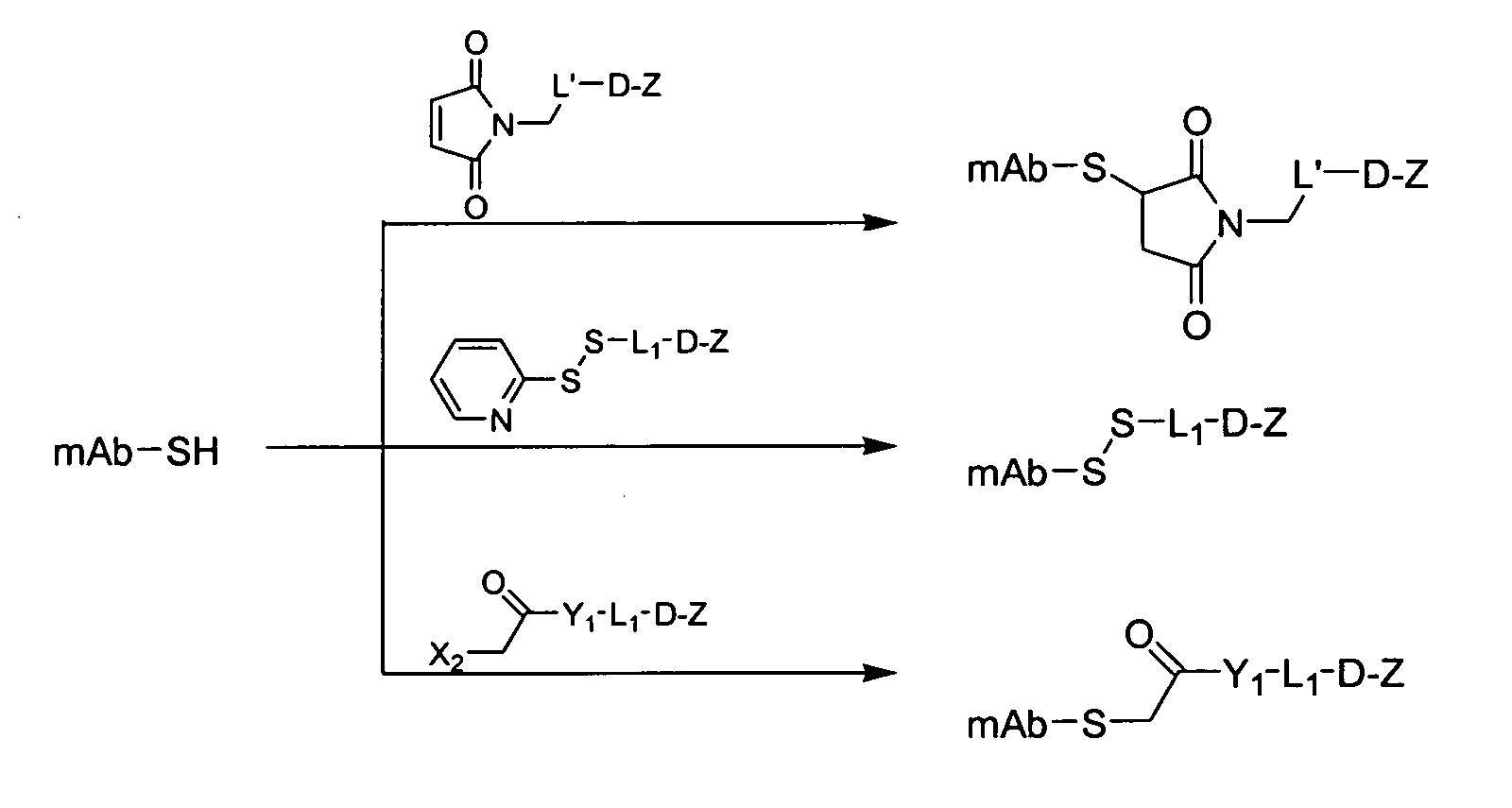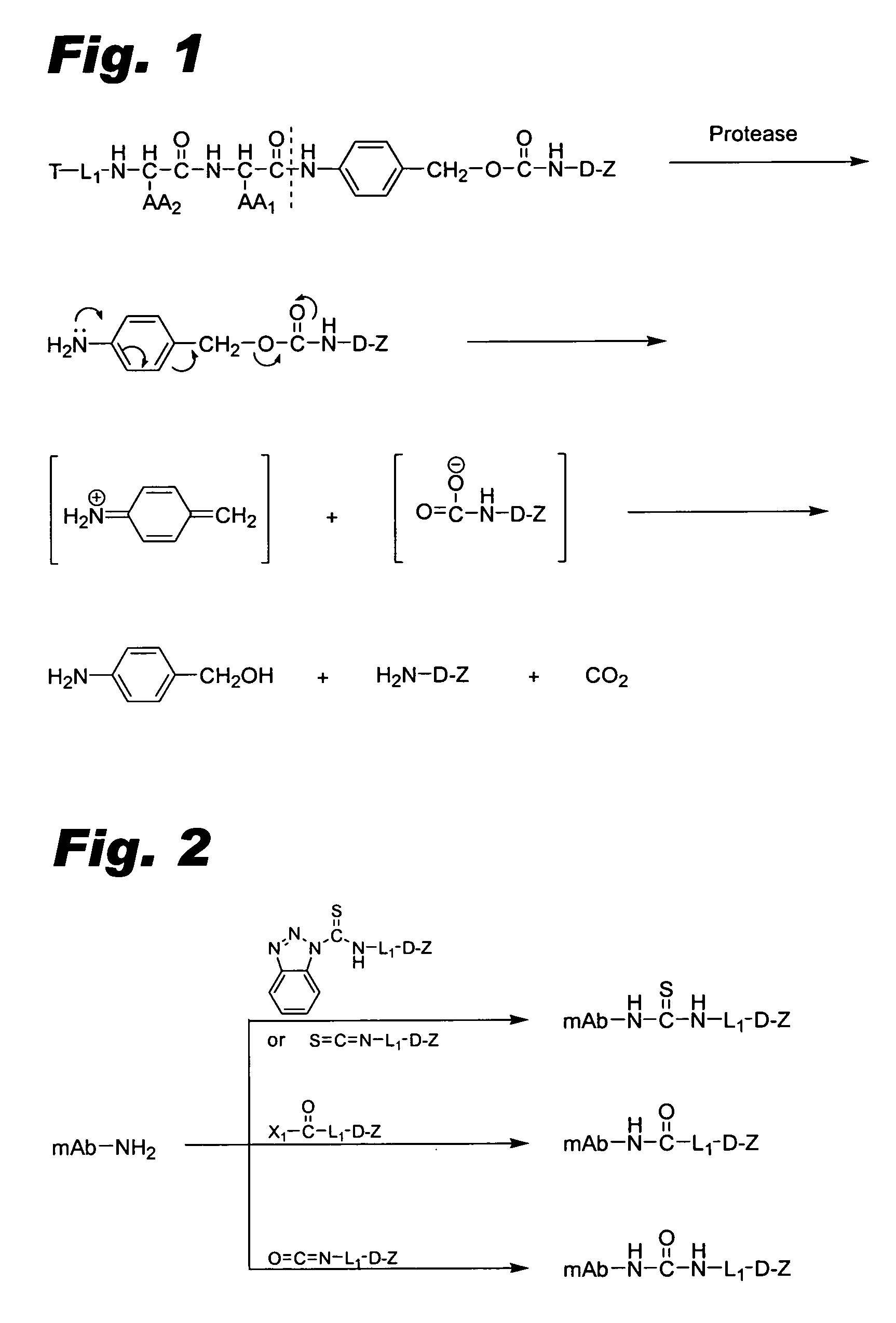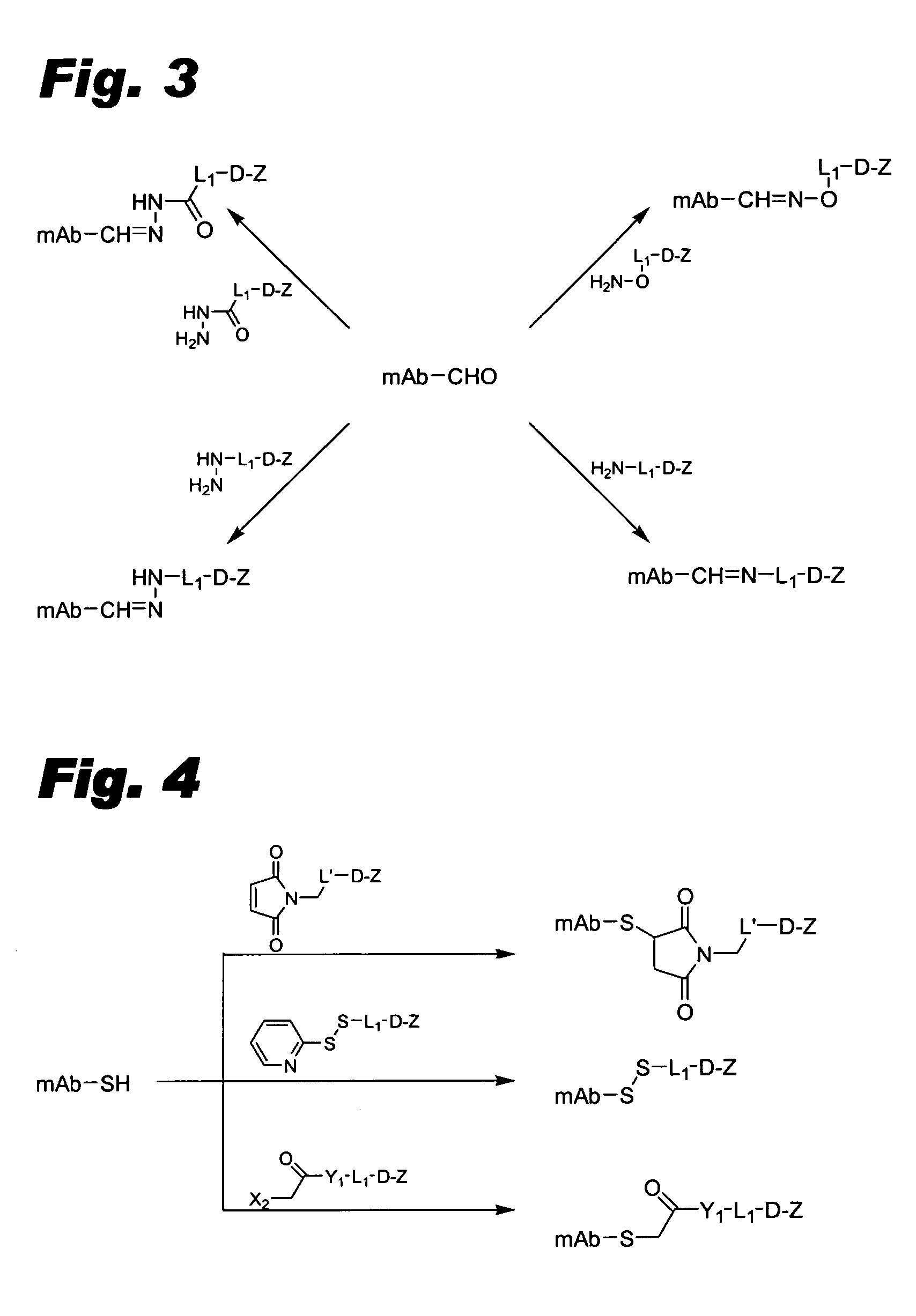Conjugates with reduced adverse systemic effects
a technology of conjugates and systemic effects, applied in the direction of antibody medical ingredients, peptides/protein ingredients, peptides, etc., can solve the problems of systemic (non-selective) adverse effects, rare absolute selectivity, and virtually unavoidable premature cleavage of linker moiety,
- Summary
- Abstract
- Description
- Claims
- Application Information
AI Technical Summary
Benefits of technology
Problems solved by technology
Method used
Image
Examples
example 1
[0089]FIG. 7 depicts the synthesis of maytansinoid compounds usable as modified active agents in conjugates of this invention, as detailed in this example. The preparation of maytansinoid conjugates is also described in Santi et al., U.S. 2003 / 0109682 A1 (2003), the disclosure of which is incorporated herein by reference.
[0090] Maytansinol-3-bromoacetate (2). Maytansinol (1) is obtained by reduction of ansamitocin P3 (AP3), as described in Kupchan et al., J. Am. Chem. Soc., 97, 5294-5295 (1975), and is then acylated according to the procedure of Kawai et al., Chem. Pharm. Bull., 32, 1001-1002 (1984), the disclosure of both documents being incorporated herein by reference. A solution of maytansinol (1 eq.), bromoacetic acid (6 eq.), dicyclohexylcarbodiimide (“DCC”) or N-(3-dimethylaminopropyl)-N′-ethylcarbodiimide (“EDC”) (6 eq) and 4-dimethylaminopyridine (“DMAP”) (2 eq) in dichloromethane is stirred at room temperature until maytansinol no longer persists by thin layer chromatogra...
example 2
[0094]FIG. 8 shows the synthesis of leptomycin B compounds usable as modified active agents in conjugates of this invention, as detailed in this example.
[0095] t-Butyloxycarbonyl (“Boc”)-Protected amide (7). To a solution of diethylene triamine (1 eq) and sodium bicarbonate (2 eq) in THF-water is slowly added a solution of di-t-butyl dicarbonate (“Boc2O”) (1.0 eq) in THF. The reaction is stirred until judged complete by TLC analysis. The crude protected amine is then slowly added to a solution of leptomycin B (1.0 eq), benzotriazol-1-yloxy)tripyrrolidinophosphonium hexafluorophosphate (“PyBOP”) (1.1 eq) and N-hydroxybenzotriazole (“HOBt”) (1.1 eq) in N,N-dimethylformamide (“DMF”). This solution is stirred until judged complete by TLC analysis. The Boc-protected amide 7 can be isolated with column chromatography.
[0096] Bromoacetamide leptomycin B (8). A solution of amide 7 (1 eq), bromoacetic acid (6 eq), DCC or EDC (6 eq) and DMAP (2 eq) in dichloromethane is stirred at room tempe...
example 3
[0099] This example describes the preparation of maleimide linked conjugates.
[0100] MC-Val-Cit-PAB-OH is prepared as described in Dubowchik et al., Bioconjugate Chem., 13, 855-869 (2002) (“Dubowchik et al.”, incorporated herein by reference). (MC stands for a maleimidocaproyl moiety, Val stands for a valyl moiety, Cit stands for a citrullinyl moiety, and PAB stands for p-aminobenzyl.)
[0101] Ether-linked intermediates. Generally, active agents or modified active agents can be connected to linker moieties via an ether linkage according to the procedure of Toki et al., J. Org. Chem., 67, 1866-1872 (2002) (“Toki et al.”, incorporated herein by reference). The following detailed procedure is representative: Fmoc-Val-Cit-PABOH (Fmoc denoting a 9-fluorenylmethoxycarbonyl group; Dubowchik et al., Bioconjugate Chem., 13, 855-869 (2002), 1 eq), triphenylphosphine (1.1 eq) and active agent or modified active agent having a phenolic OH group (1.1 eq) are dissolved in DMF:toluene (1:1) and eva...
PUM
| Property | Measurement | Unit |
|---|---|---|
| Affinity | aaaaa | aaaaa |
Abstract
Description
Claims
Application Information
 Login to View More
Login to View More - R&D
- Intellectual Property
- Life Sciences
- Materials
- Tech Scout
- Unparalleled Data Quality
- Higher Quality Content
- 60% Fewer Hallucinations
Browse by: Latest US Patents, China's latest patents, Technical Efficacy Thesaurus, Application Domain, Technology Topic, Popular Technical Reports.
© 2025 PatSnap. All rights reserved.Legal|Privacy policy|Modern Slavery Act Transparency Statement|Sitemap|About US| Contact US: help@patsnap.com



